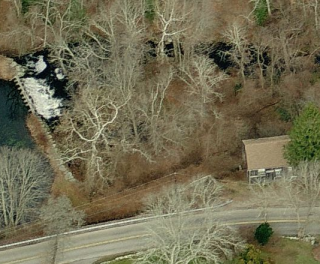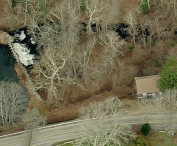Mill Record North Stonington
RETURN TO ‘FIND MILLS’Disclaimer: Content for these properties was compiled in 2014-2017 from a variety of sources and is subject to change. Updates are occasionally made under Property Information, however the Connecticut Trust for Historic Preservation (dba Preservation Connecticut) makes no representation or warranty that the information is complete or up-to-date.
- Complex Name (Common)
- Clarks Falls Mill
- Complex Name (Historic)
-
- Clarks Falls Mill
- Address or Location
- 107 Clarks Falls Road, North Stonington
- County
- New London
- Historic Designation
- Associated Mill Community
- n/a

- Historic Information
Companies Associated w/Complex
- Clarks Falls Mill
Use (Historic)
Largest Documented Workforce
n/a
Historic Narrative
In the 18th century the stream powered a sawmill, which Thomas Clark of Newport, RI bought in 1796. The Clark family controlled the water privileges throughout the 19th century, using them to power several enterprises. In the early 19th century Peleg Clark built a grist mill and later Alfred Clark founded Clarks Falls Manufacturing Co. to produce flannels. Peleg Tift joined Alfred Clark in the sawmill and gristmill businesses in 1861, when they rebuilt the dam and watercourses. Although the building has been a gristmill for at least 50 years, it may originally have been the Clark and Tift sawmill. The east wall, now boarded closed, once opened to permit the entry of logs, as depicted in a c.1895 photograph of the site. The mill's heavy center girts are closely spaced, an arrangement consistent with the structural requirements of supporting a saw frame. Present equipment includes one run of stone and a John Deere two-hole corn-sheller. The turbine has been removed for reconditioning and a new steel vertical shaft, between wheelpit and stone, has been installed. Otherwise the power system retains the components of the early 20th century, primarily steel shafting with cast iron gears. The masonry dam survives but the stone-walled headrace collapsed recently. Grain milling will resume when repairs are completed on the headrace and turbine. Tail water from this mill ran through a stone culvert under the road and continued eastward to the wheelpit of the flannel mill some 75 yards away. Except for stone foundations there are no aboveground remains of the flannel mill. A 2 1/2-story, gable-roofed frame boardinghouse stands on the bank south of the flannel mill's headrace. (Roth)
- Architectural Information
Number of Existing Buildings
one
Dates of Construction
c.1861
Architect
n/a
Builder
n/a
Building Type
Architectural Description
It is likely that the one extant mill was rebuilt c.1861 when Tift joined Clark. The 1 1/2-story, 36' x 22' frame mill, with gable roof and vertical-board siding, stands on a foundation/ wheelpit of rubble masonry. (Roth)
Exterior Material(s)
Structural System(s)
n/a
Roof Form
Roof Material
n/a
Power Source
n/a
Condition
n/a
Condition Notes
n/a
- Property Information
-
Specific Location
between Wyassup Brook to the north and Clarks Falls Road (route 216) to the south
Adjacent To
Exterior Visible from Public Road?
Yes
Parcel ID / Assessor Record Link
- 97-2398 / Link →
Acreage
1.18
Use (Present)
- Sources
-
Form Completed By
n/a
Date
n/a
Bibliography
- New London Atlas; Census 1850, 1860, 1870, 1880; Barlow's Insurance Survey, No.6856, 1882, MVTM; William Haynes, Stonington Chronology, 1976; Photographs in the collection of Jack Bucklyn, Old Mystic, CT; interview with John Palmer, miller, May 1980.
- Roth, Matthew, et al, Connecticut: An Inventory of Historic Engineering and Industrial Sites (Washington DC: SIA, 1981).
- Representative View(s)Click on image to view full file




